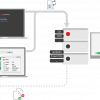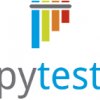Automation
Articles
 |
An Automated Approach to Regression Testing Testing every single thing isn't feasible, so regression testing should be holistic in verification while focused in scope. A good goal is to ensure no regression issue is introduced into a critical business flow. This endeavor can benefit from automation. An automated testing approach specific to reducing regression issues can go a long way toward building a good client relationship and high brand value. |
|
 |
6 Steps for Succeeding with Test Automation in Agile Lots of test automation efforts in agile software development fail, or at least do not maximize their potential. This article looks at two main reasons test automation may not live up to the expectations that testers and other stakeholders in the agile development process have, then outlines six steps to avoid falling into these traps. Here's how to succeed with test automation in an agile environment. |
|
 |
6 Ways Testers Can Add Value (Other Than Functional Testing) Many testers spend their time doing functional testing and don't come out of this cocoon. But software testing is all about discovering quality-related information to assist stakeholders in making informed decisions, and there are multiple ways to discover information in addition to functional testing. Here are six actions that will help you add more value to your projects. |
|
 |
Use the Rejected Defect Ratio to Improve Bug Reporting There are many metrics to measure the effectiveness of a testing team. One is the rejected defect ratio, or the number of rejected bug reports divided by the total submitted bug reports. You may think you want zero rejected bugs, but there are several reasons that’s not the case. Let's look at types of rejected bugs, see how they contribute to the rejected defect ratio, and explore the right ratio for your team. |
|
 |
Who Should Set Up Continuous Integration for Automated Tests? If you want to trigger long-running, end-to-end automated tests, you must integrate the test execution system with the continuous integration system. But this job falls in a fuzzy area that meets at the nexus of feature development, test automation development, quality assurance, and build and release engineering. Here's how to decide who should be responsible for the setup. |
|
 |
Lessons Learned Switching Manual Tests to Pytest If you want to start automating your test cases, László Szegedi makes an argument for using the popular Python and Selenium combination. Here, he gives a test script you can use after every release to find any serious regression bugs in the system, to be executed automatically. Integrate it with your existing development pipeline and you get a pretty useful tool for continuous improvement. |
|
 |
A Beginner's Guide to Test Automation If you’re new to automated testing, you’re probably starting off with a lot of questions: How do I know which tests to automate? Why is automated testing useful for me and my team? How do I choose a tool or framework? This article answers a lot of those questions—and gives you some more to consider!—so you have an excellent foundation for beginning your automation endeavors. |
|
 |
Is All Testing Exploratory? A Slack Takeover with Michael Bolton Thought leaders from the software community are taking over the TechWell Hub for a day to answer questions and engage in conversations. Michael Bolton, a speaker and thought leader in the testing industry, hosted this Slack takeover, which led to discussions about test exploration, tools, and testers as gatekeepers. |
|
 |
The TERMS for Test Automation Risk or Success Automation is a service to testing—a tool that may prove to be useful or turn wasteful. When approaching test automation, there are five main areas to focus on, expressed in the acronym TERMS: Tools and Technology, Execution, Requirements, Maintenance, and Security. Here are some examples of how these factors are involved in defining automation success or failures. |
|
 |
Simplify Continuous Operation Tests with a Periodic Reboot Continuous operation tests find important bugs, partly as a result of their long operation and partly by increasing the probability of finding statistical bugs. However, CO tests have their own downsides. Mandating a periodic reset or reboot can work around these issues, as well as save time and cost for testing, reproduction, debugging, and fix verification. |











